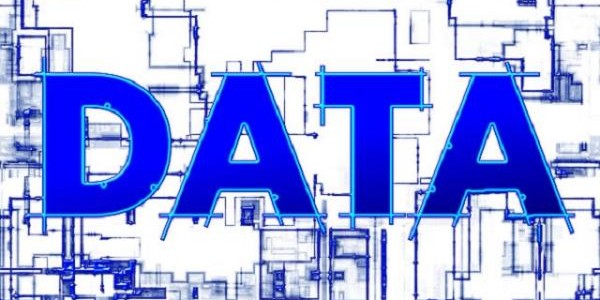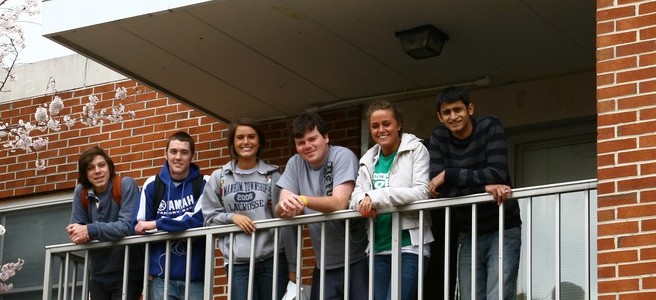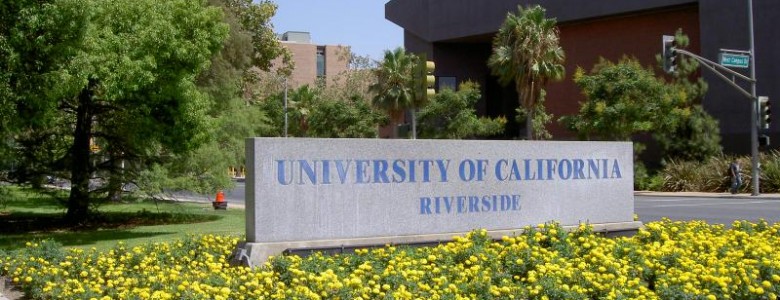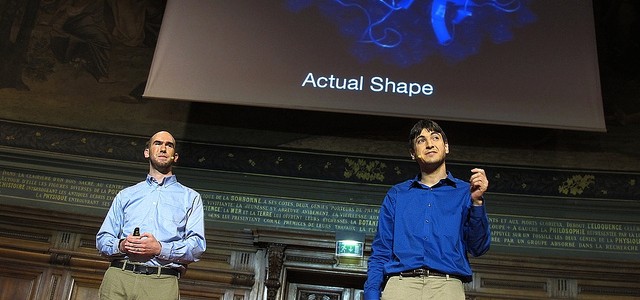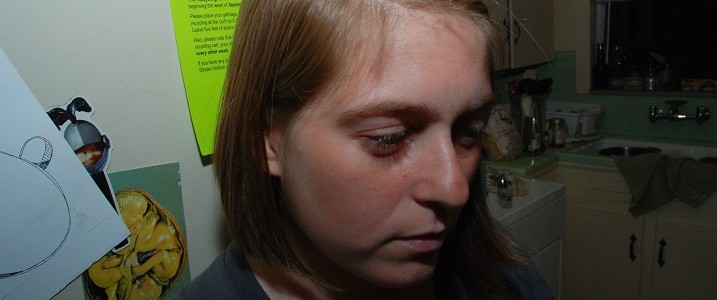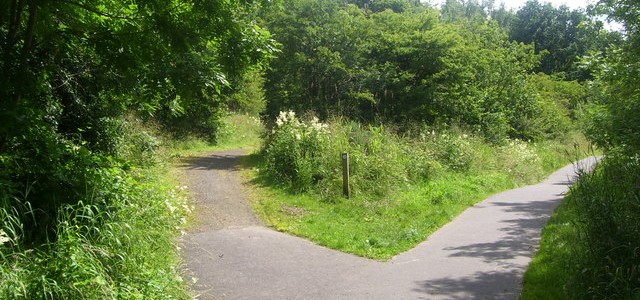In May 2014, Drexel University was awarded a $1.2 million, five-year grant from the Howard Hughes Medical Institute to fund initiatives to increase retention of STEM undergraduates, especially those in their first two years of college. One strategy is to assign STEM freshmen to mentored learning communities. These communities will have both selected faculty and upper level undergraduates to mentor the students both in adjusting to academic demands and a new social environment.
The involved faculty will be innovative teachers who use engagement strategies known to increase retention in general. A lead professor on the project explained, “This includes approaches such as group problem solving, answering questions on course content with immediate feedback, case discussions or in-class debates.” This is where you, the librarian, should step in and say, “I can help you with those approaches and save you time!”
Academic librarians are highly qualified to select cases for discussions or readings for debate preparation. We’ve dealt with enough students to know the subject matter level that is appropriate for them and what would interest them. We’re likely to know where to find that content more quickly than faculty or teaching assistants. A former graduate assistant, Carl Adkins, and I actually collaborated with a professor in this manner for an environmental science introductory course. At that time, I wasn’t thinking about supporting retention of students, but that’s exactly what we did. The professor wanted to engage the students with debates on environmental issues and she asked us to select the readings on both sides of the issues. You can read about our strategy for selecting the readings in “Fueling Green Debate: Creating Student Reading Lists for Environmental Science Debates Using RefShare” in the Electronic Green Journal.
So be alert to opportunities to collaborate in active learning activities, such as when a science department is awarded a grant or is drafting a grant proposal for STEM retention. We shouldn’t be shy about asking to collaborate; we have the expertise to select excellent content for STEM students, thus raising the probability of retention.
OK, let’s be honest. How many librarians out there took calculus in college? How many had to take it more than once? Future librarians are not the only ones who struggle with first-year college mathematics. Over 40% of students fail their first course in mathematics at the college level, and obviously, this impacts the retention of STEM majors. How can librarians help students in mathematics who are at least two years away from literature searching in library resources?
A recent paper by researchers at Indiana University Purdue University Indianapolis (IUPUI) presents findings that may provide some clues. In “The Effects of Implementing Recitation Activities on Success Rates in a College Calculus Course,” Watt et al. report that students who attended required recitation sessions in which they learned calculus concepts through multiple representations had a lower course fail rate and higher retention after one year, compared to students who had optional peer mentoring or required recitations with graduate students. Usually, calculus is taught solely through algebraic representations, but the experimental, active learning recitation sessions also used verbal, geometric, graphical, and numeric representations of concept.
The content of these successful learning activities may be beyond my comprehension, but as a librarian, I can find learning activities or objects in books, repositories, and websites. Part of the reason STEM faculty don’t change their pedagogy is the huge time commitment required for redesigning a course. Knowing a librarian could assist in finding learning activities may encourage faculty to take that first step away from traditional lecture style teaching and toward active learning. Librarians can also develop collections to support changes in STEM teaching, including lesson plans, and promote them to faculty.
So if you work with STEM departments, don’t be intimidated by the content. You’re an expert at tracking down information, and you can contribute to retention of STEM students even without knowing Taylor’s Theorem (I never did understand that one).
Image attribution: “NooNoo Studying Calculus” by Dean Jackson, 2004. Licensed by Creative Commons.
This question has been running through my head since reading, “’Different People Have Different Prioirties’: Work-family Balance, Gender, and the Discourse of Choice” by Beddoes and Pawley in Studies in Higher Education. The article reports on an investigation of the continuing underrepresentation of women faculty in STEM fields. Both female and male faculty interviewees expressed that women have the freedom to choose whether to stay in academics or not. Yet, the women also described how the academic system and social norms are stacked against them if they want to have a partner and/or children. The researchers observe: “Here, then, we can see choice as an inadequate notion serving to mask or ‘deproblematize’ structural inequalities, thus relinquishing higher education administers [sic] from responsibility for change” (p.1581).
I have seen a similar limitation of choice among undergraduates who leave STEM majors from the reading I’ve done on the topic. Although structural inequalities for women and minorities who attempt to stick with STEM are well-documented, I want to focus today on inequalities that impact fiscally disadvantaged students. Many of the activities proven to support STEM persistence are only available to students who attend school full-time and live on-campus. Examples are doing volunteer work or unpaid internships in campus labs, participating in student study groups and organizations, interacting with faculty outside of class time, and residing in living-learning dorms.
At my university, many of the students take classes part-time and work part- or full-time to pay for their education. The vast majority of students commute from rental housing or their parents’ homes to save money on living expenses. These students don’t have the luxury of having coffee with a professor, or living and socializing with students who are also STEM majors, because they are trying to make ends meet. Yes, there is financial aid, but it frequently involves taking on crushing loan debt that may be difficult to pay off in the current economy.
So are working or commuting students who leave STEM for non-STEM majors simply making an independent choice to enter a field better-suited to them? I would argue the choice is not independent, but heavily influenced by their socio-economic status. Because they don’t fit the expensive “full-time, on-campus” student paradigm, they are cut off from academic and social support needed to succeed in STEM majors. I would encourage higher education administrators to seriously examine a system that appears to work against disadvantaged STEM students, no matter how intelligent or motivated they are.
Categories: Disadvantaged students
Tags: Studies in Higher Education; Kacey Beddoes; Alice L. Pawley
Photo attribution: “Happiness Is a Choice,” by Laura Grace Bordeaux, 2011. Licensed through Creative Commons.
Over the summer, the National Center for Education Statistics (NCES) released the 2014 report from the Baccalaureate and Beyond Study, a four-year longitudinal study which started in 2008 and followed bachelor’s degree recipients as they went onto employment and/or further education. There are numerous tables showing the percentages of students who graduated with STEM degrees, their subsequent employment, and their average salaries. There’s lots of good information here for both faculty and students who are wondering about what the future holds for students with a STEM degree.
The NCES also provides the Integrated Postsecondary Education Data System, which integrates information from a number of annual surveys of colleges and universities that participate in the federal student aid program. With the data system, you can look at data about your individual institution, including number of STEM degrees awarded, and compare it with other institutions. You can create, save, and print tables or data files.
NCES is a fantastic resource to explore as you start to look at STEM retention at your university over time and in comparison to peer institutions.
Have you ever thought about living in a STEM dorm, or offering an embedded librarian service in one? A 2012 study published in The Journal of Higher Education (DOI: 10.1353/jhe.2012.0017) suggests that librarians could contribute to STEM retention through participation in field-specific residential programs, also known as living-learning (LL) programs.
Soldner et al. surveyed 5240 students who were living in residential halls at 46 universities across the country; about 37 percent of them lived in STEM LL dorms, intended for students who plan to major in a STEM discipline. The participants were all first year students in their second semester at the time of the survey. The researchers found a positive, although indirect, relationship between participation in a STEM LL program and a student’s self-reported likelihood of completing a STEM degree (p. 325). According to the researchers’ model, a LL program increases social support for undergraduates, which in turn improves self-efficacy, known to be positively correlated with retention.
Alright, so living in a student dorm isn’t your cup of tea. How else could a librarian become involved in a STEM residential community? One approach is holding reference hours in a dorm, which many librarians are doing already. It’s likely that if asked, a STEM LL program would be thrilled to have a librarian make weekly visits to a dorm. LL dorms also tend to provide informational sessions for students and again would likely welcome a presentation by a STEM librarian. Basically, anything you can do to let the students know you support them and are rooting for them to be successful will get them down the road to a STEM degree.
Image attribution: York College of PA, Mini Dorms, 2009. Licensed through Creative Commons.
A University of California, Riverside (UCR) news site reports that the College of Natural and Agricultural Sciences received a $2.4 million grant from the Howard Hughes Medical Institute to add sections to the Dynamic Genome Course for freshmen, which provides “research immersion.” Currently, the students do original analysis of plant transposable elements, and new sections will study other model organisms. Susan Wessler, primary investigator on the grant, describes the course in a 2:25 minute video. This program makes me want to put on my lab coat again!
Dynamic Genome is obviously evidence-based in design, drawing from the wealth of literature on what is needed to retain STEM undergraduates. It’s all there – early involvement in research, group problem-solving, learning relevant facts and skills, contribution of new knowledge, and being part of a scientific community.
Do you know what the computer lab in the video needs? A librarian! Those students are designing experiments, which usually begins with doing a literature search for methods previously used. This would be the perfect environment for a librarian to be doing hands-on training in selecting databases, creating search strategies, and evaluating sources. An introduction to the concept of data management would also be relevant to the course’s emphasis on computational biology. Piloting electronic lab notebooks would be another way for a librarian to collaborate with the Dynamic Genome Course. As you can tell, I’m excited about the possibilities.
Actually, for all I know, there is a librarian collaborating with the program. I’m going to contact Susan Wessler and ask. Keep watching the blog to find out the answer!
Photo attribution: “UCR University Ave entrance” by Original uploader was Amerique at en.wikipedia – Transferred from en.wikipedia. Licensed under Creative Commons Attribution-Share Alike 3.0 via Wikimedia Commons – http://commons.wikimedia.org/wiki/File:UCR_University_Ave_entrance.JPG#mediaviewer/File:UCR_University_Ave_entrance.JPG
While bridge or undergraduate research programs to increase retention are commendable, they only serve a limited number of students compared to the thousands of high school and community college students entering universities to study STEM. Over the summer I attended the final presentations of community college students participating in the Howard Hughes Medical Institute Summer Transitions Workshop at the University of North Texas. The student enthusiasm and motivation generated by the program was amazing, but only about 16 students can participate in the program each summer. What can we offer all the other high school and community college students who need encouragement to stay in STEM, but can’t get into similar research programs?
At a recent conference, I was talking to a fellow member of the ACRL Science and Technology Section about citizen science. It dawned on me that citizen science may be the answer to involve a larger number of STEM undergraduates in actual research and give meaning to what they are learning in college.
Zooniverse, maintained by the Citizen Science Alliance, provides websites for researchers who want volunteers to collaborate with them to do “real research online.” Zooniverse started with the well-known Galaxy Zoo and has grown to 24 projects with over one million citizen participants. Scientific American maintains an online list of citizen science projects that is 10 pages long. Some of these projects even have a gaming format, an example being FOLDIT to create protein folding structures. These opportunities would be especially convenient for the many students who work part- or even full-time while attending college; they can participate at 2 am and still experience hands-on research.
I’m planning to raise the possibility of incorporating citizen science into at least the library resources for some introductory biology courses, if not into the curriculum itself. I’ll let you know how that conversation goes!
Photo attribution: “PhotonQ-Seth Cooper and Firas Khatib on FOLDIT,” by PhOtOnQuAnTiQuE, 2012, CC BY-NC-ND 2.0.
A Danish research group has applied the psychology theory, identity work, to understand why many high school students avoid entering STEM disciplines in college, despite enjoying and excelling in those subjects. In the 2014 International Journal of Science Education article, “To Choose or Not to Choose Science: Constructions of Desirable Identities among Young People Considering a STEM Higher Education Programme,” Holmegaard et al. report that 13 of the 38 students they interviewed were “non-STEM choosers” because they saw STEM undergraduate education as an environment too restrictive for developing their identities in a number of ways. The students perceived that a STEM education would not provide the social experience they wanted for their personal development (p. 199). They wanted to interact with other students, and discuss and explore STEM topics. Students also wanted to learn science facts in the context of how they are relevant to everyday life and social issues, but perceived STEM education wouldn’t meet that expectation (p. 200).
The researchers went back a year later and interviewed 18 of the students who chose STEM programs to see whether their experience matched up with the perceptions of the non-choosers. The choosers found themselves in large lecture classes in which they learned STEM basics, without any application-based, group activities (p. 206). Many of them mentioned being forced to learn mathematics without being told its relevance for their future work (p. 207). Basically, the non-choosers had accurate expectations of STEM majors.
This study has given me a new perspective on students who love science, but reject STEM education. They are asking to be critical thinkers who engage in dialogue about social issues and potential science-based solutions. The students want to make creative contributions, rather than memorize and regurgitate facts. I agree with this statement by the authors: “The focus on identity, therefore, is not about spoiled and self-absorbed kids; it is about presenting oneself as a legitimate citizen in modern society” (p.209).
Aren’t these the types of students we want contributing to the future of our world? It seems we need a better balance of teaching the basics of STEM disciplines and giving students the autonomy to explore and apply the sciences in order to attract and retain STEM undergraduates. Small-scale programs with these characteristics have been funded over the past two decades, but a broader, more sustainable approach is needed. There is great potential here for academic librarians to collaborate with faculty to design curricula and environments that support critical exploration of STEM.
Photo attribution: World Citizen Flag, derivative work by Kizar, 2010. Some rights reserved.
A helpful way to understand why women and minorities struggle to persist in STEM majors in college is provided by the goal congruency theory from psychology. Jessi L. Smith, Erin Cech, Anneke Metz, Meghan Huntoon, and Christina Moyer used the theory to frame their research published in the 2014 article, “Giving Back or Giving Up: Native American Student Experiences in Science and Engineering” in Cultural Diversity and Ethnic Minority Psychology. The theory states that “individuals pursue and persist at tasks believed to match (i.e., are congruent with) their personal goals and values” (414). When the tasks and personal goals are incongruent, then STEM undergraduates are at risk for attrition.
Minorities and women, more often than white men, value the communal goals of helping others and giving back to their communities. These goals clash with the individualistic characteristics of STEM culture – intense competition and lack of group activities and support– which are most prevalent in the first two years of college. Native American undergraduates, both men and women, frequently experience goal incongruency, especially those raised on reservations who plan to eventually help others in those tightly-knit communities by earning a STEM degree.
It’s unfortunate that the first two years of STEM education are a poor representation of the actual character of STEM occupations. Many STEM professionals and organizations do have communal goals of collaboration and improving the environment and society. All academic partners, including libraries, need to be thinking about how to alter the artificially individualistic culture of STEM education and make its tasks more congruent with the values of many promising undergraduates.
Photo attribution: “Disappointed” by Dan Machold, some rights reserved.
I started this blog in September 2013 with the metaphor and an image of the “STEM pipeline.” The metaphor assumes that all potential STEM professionals follow a similar career path, and those who don’t accomplish certain milestones or lack key attributes “leak out” of the pipeline.
Cannady, Greenwald, and Harris make a convincing argument that a new metaphor is needed in the 2014 article, “Problematizing the STEM Pipeline Metaphor: Is the STEM Pipeline Metaphor Serving Our Students and the STEM Workforce?” in Science Education. Educational policy and programs have been based on the pipeline metaphor since the 1990s, but gains in the number of STEM professionals have been minimal, especially among minorities and women (p. 444).
After analyzing data from the National Educational Longitudinal Study of the Eighth-Grade Class of 1988, the researchers have proposed a metaphor of multiple pathways. High school math preparation and interest in STEM majors and/or careers are two attributes often correlated with progress through the pipeline. Amazingly, Cannady et al. discovered that of the 430 people from the 1988 cohort who went into STEM careers, 72.7% of them neither took calculus in high school nor expressed early interest in a STEM major or career (p. 451). Furthermore, it was twice as likely for the individuals who eventually entered the computer or life science workforces to lack early math preparation and STEM interest, than those who pursued physical science, mathematics, or engineering careers (p. 453). The paper elucidates other pathways, but these were the most striking results.
In my exploration of STEM retention issues, I have been discouraged to notice that programs targeting STEM undergraduates over past decades only reach a small number of students and aren’t sustainable without constant grant support, which partly explains why we’ve seen a marginal increase in STEM professionals. I agree with Cannady et al. that an alternative metaphor would be helpful to generate fresh perspectives on the development of STEM professionals and new ideas for encouraging students who reach that destination by a variety of paths.
Image attribution: Park Pathways for NS7357© Copyright Ross Watson and licensed for reuse under this Creative Commons Licence


